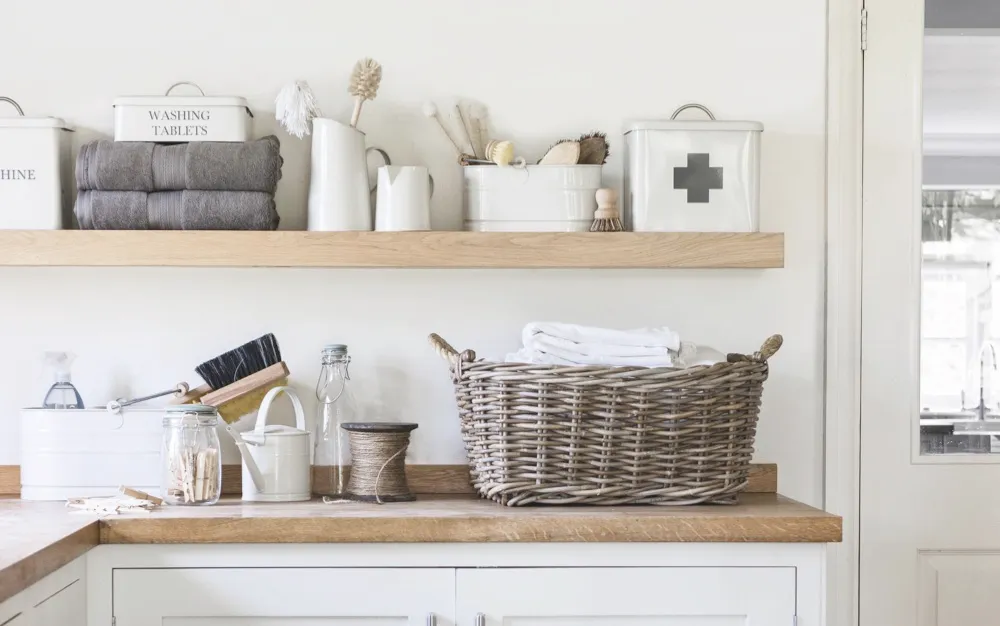1
Tailor your storage
‘Well-designed, fitted furniture is the best way to maximise storage in any room. Full-height cupboards make the most of the room’s height while avoiding the gaps and dusty tops of freestanding pieces,’ says Julia Kendell, interior designer at Hammonds.
Fitted furniture can provide about a third more storage than freestanding cabinets thanks to how the space inside is organised. Bespoke cabinets are the more expensive option but can be built to your specifications while modular fitted furniture is cheaper but offers less flexibility of design.
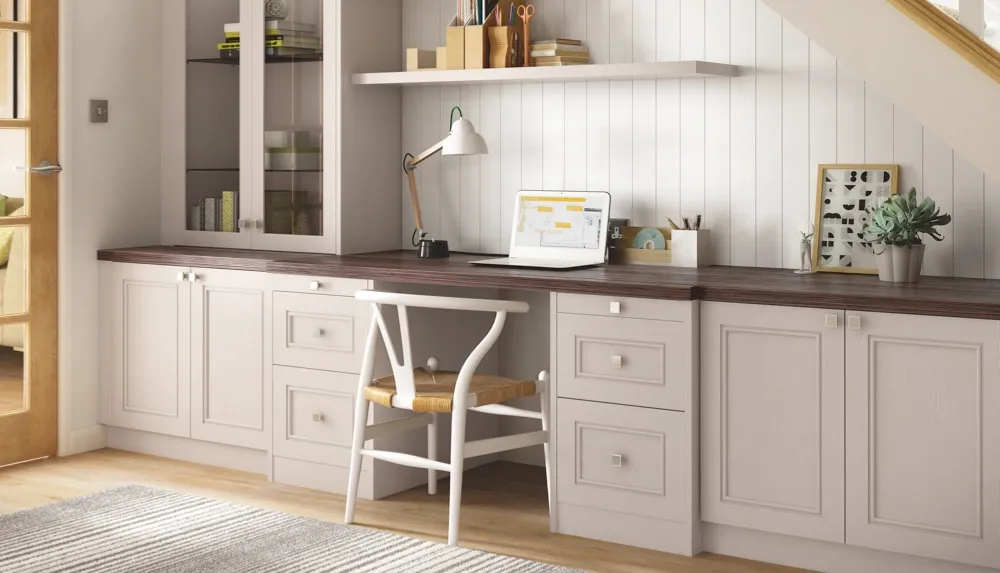
2
Use manageable units
Modular systems are arguably the most flexible and creative form of storage. Consisting of open shelving and cupboard and drawer units that fit together in an arrangement that suits your space, they allow you to strike the right balance between display and practical storage.
They’re adaptable too and by re-configuring them or adding new pieces the system can evolve as your needs change. ‘Modular furniture buyers split broadly into two groups', says Robert Hasty, owner and director of Ligne Roset. Most modular storage is sleek and contemporary but if you appreciate retro style, classic mid-century systems are easy to find and quirkier designs can be constructed using reclaimed industrial shelving or crates.
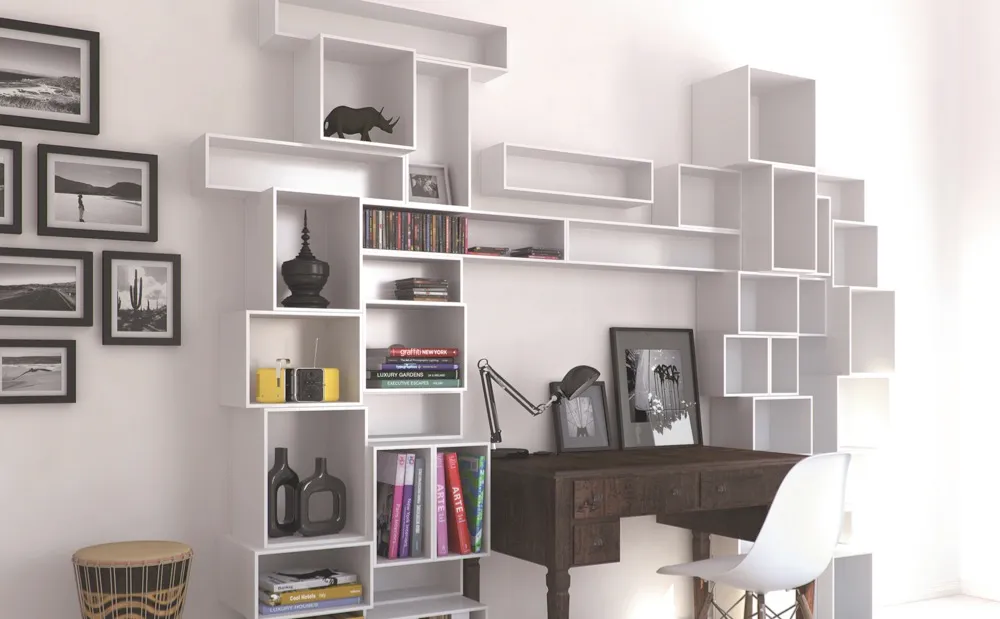
3
Maximise potential space
Every home has underused spaces that could be converted to provide extra storage. Barbara Genda, founder and principal designer at Barbara Genda Bespoke Furniture, sees the potential in commonly neglected areas. ‘Creating a wardrobe for outdoor clothing in the space under the stairs is a great solution.'
'As stairs are usually deeper than a wardrobe we often put hanging space for coats at the front and fit shelves behind it. Pull-out shoe trays and internal drawers for dog paraphernalia and other small items are a good idea too. If you’re converting a loft space, consider storage at the architectural planning stage.'
'Consulting a built-in furniture specialist in advance will help you achieve the best layout. In any attic, fitted cupboards, pull-out cabinets and deep drawers built under the low eaves are a fantastic way to make use of an awkward space that won’t eat in to the main floor area.’
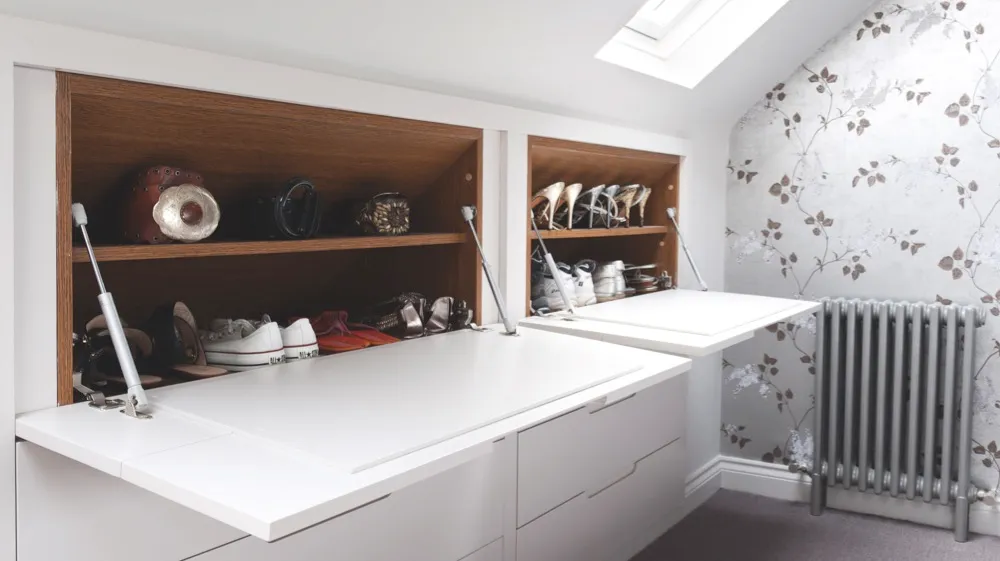
4
Make a statement
Before fitted kitchens and built-in wardrobes became a feature of many homes, cabinet furniture was made tall and sturdy to meet all the demands of household storage. Antique dressers, wardrobes and cabinets are valued now as statement pieces and they offer high-capacity storage, too.
Large cupboards and armoires are particularly versatile and can be re-fitted to become a TV or stereo cabinet, drinks cupboard or simply to swallow up everyday clutter. There’s a risk that permanent alterations to an antique cabinet will affect its value but you can use baskets and drawer partitions to organise the interior without harm.
If you’d rather invest in a cabinet already fitted for modern life, there are many to choose from and stand-alone kitchen larders are a good example. ‘Free-standing pieces are a great way to inject personality into your kitchen, as people feel they can be braver with colour and materials than they might with fitted units,’ says Graham Jones of John Lewis of Hungerford.
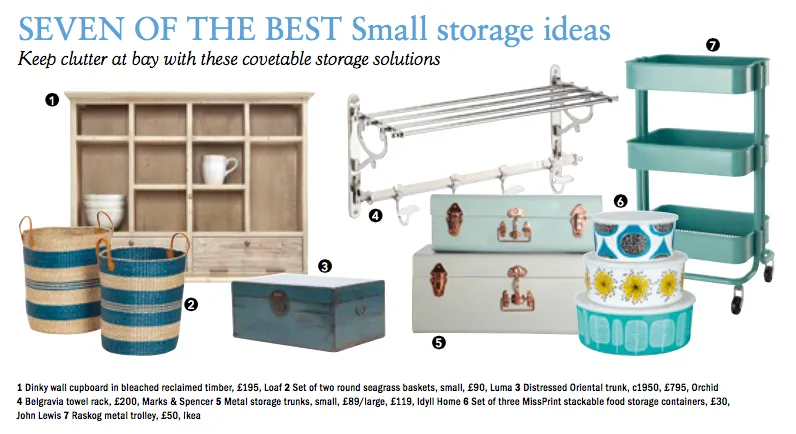
5
Invest in multipurpose furniture
Furniture that provides storage as well as doing the job it was designed for deserves a place in any home. Children’s cabin beds with drawers and cupboards in the base are a great way to store toys. Coffee tables with shelves beneath, footstools with lift-up tops and even sofas that have storage under the seat all make the most of the space they occupy.
In the hall, where clutter accumulates and space is at a premium, furniture with hidden storage will help keep the entrance tidy and create a sense of calm and order when you come home. ‘A bench with shoe storage built in uses minimal floor space and combines practicality with a comfy place to perch. Hooks to hang coats can be fitted under a shelf used for hats, post or to display decorative items,’ says Lynsey Dorman of The Cotswold Company.
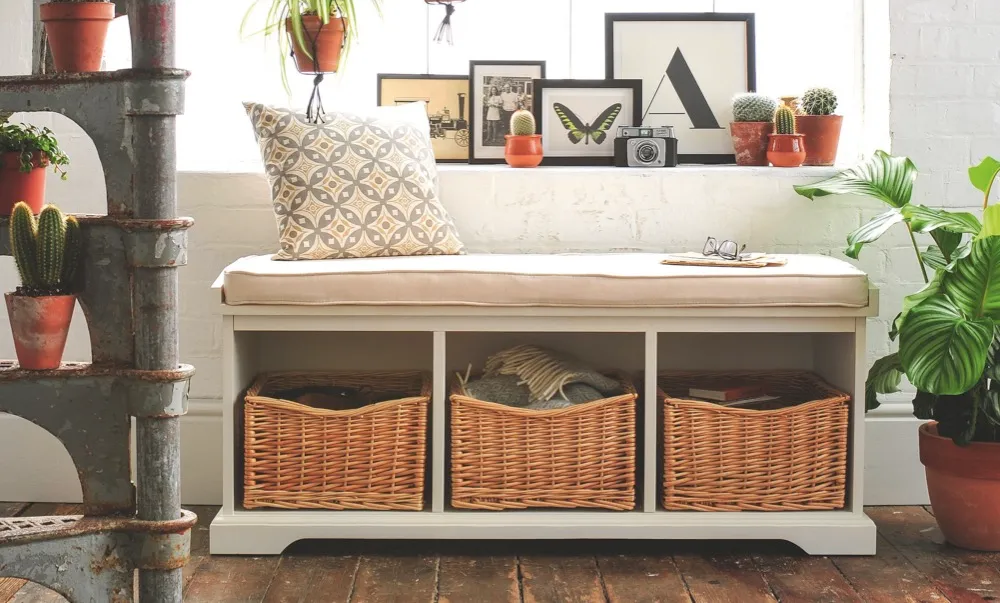
6
Tidy your storage away
Storage that provides a place for everything will help keep your rooms organised and uncluttered. But if the storage is hidden, your home will look sleek and spacious too. Concealed storage comes into its own in smaller homes and in busy, open-plan living spaces where equipment for various activities is kept.
Floor-to-ceiling cupboards that span an entire wall have a huge capacity and if they are decorated to match the adjoining walls or disguised as panelling, they will be completely camouflaged.
‘Technology such as push-open latches and pocket doors that slide inside a partition wall helps achieve the handle-less look,’ says Jane Stewart of bespoke kitchen and furniture makers Mowlem & Co.
7
Innovative ideas for your bike
Not just an easy way to get around, the modern bicycle is an example of high-tech engineering, a work of art and object of desire all packed into one strong, slender form. Too beautiful – and valuable – to leave in the garden shed, the owner of a new generation bike is more likely to hang it on the wall. This strategy not only allows it to be seen and admired but will free-up floor space in a cramped hallway or home office.
When hanging heavy objects on the wall it’s essential to make sure the fixing is secure. Purpose-made bike racks made from wood or metal are designed to take the weight and some are built as part of a box or shelf so you can keep cycling accessories all together. Many come with a mounting plate or wall fixing and instructions but the general advice is always to fit the rack on a solid brick or blockwork wall.
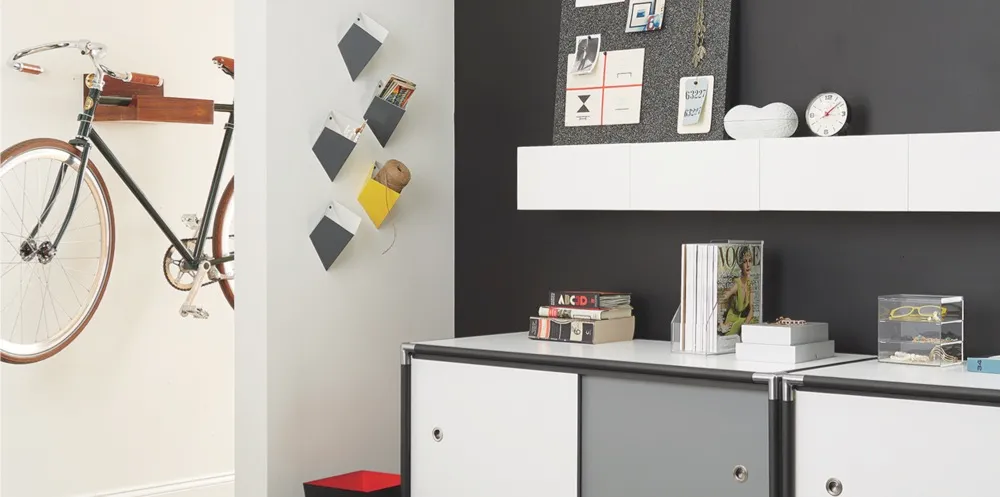
8
Be proud of your storage
Not everything you store has to be hidden away and, even in the most functional rooms, there’ll be things you’ll want to leave on show. Arranged on a kitchen shelf, jars of pulses, vintage canisters and beautifully packaged food are almost a form of decoration but in the utility room keeping things you use daily within easy reach is a practical option.
‘A floating shelf is a great alternative to wall-mounted cabinets and using tins, baskets and other containers to stow away cleaning essentials will keep the room looking attractive and create the perception of more space,’ says Jon Holloway of Garden Trading. Glass bottles and jars are great for keeping buttons, sewing thread and other small items together; you can see the contents easily and find what you need at a glance.
